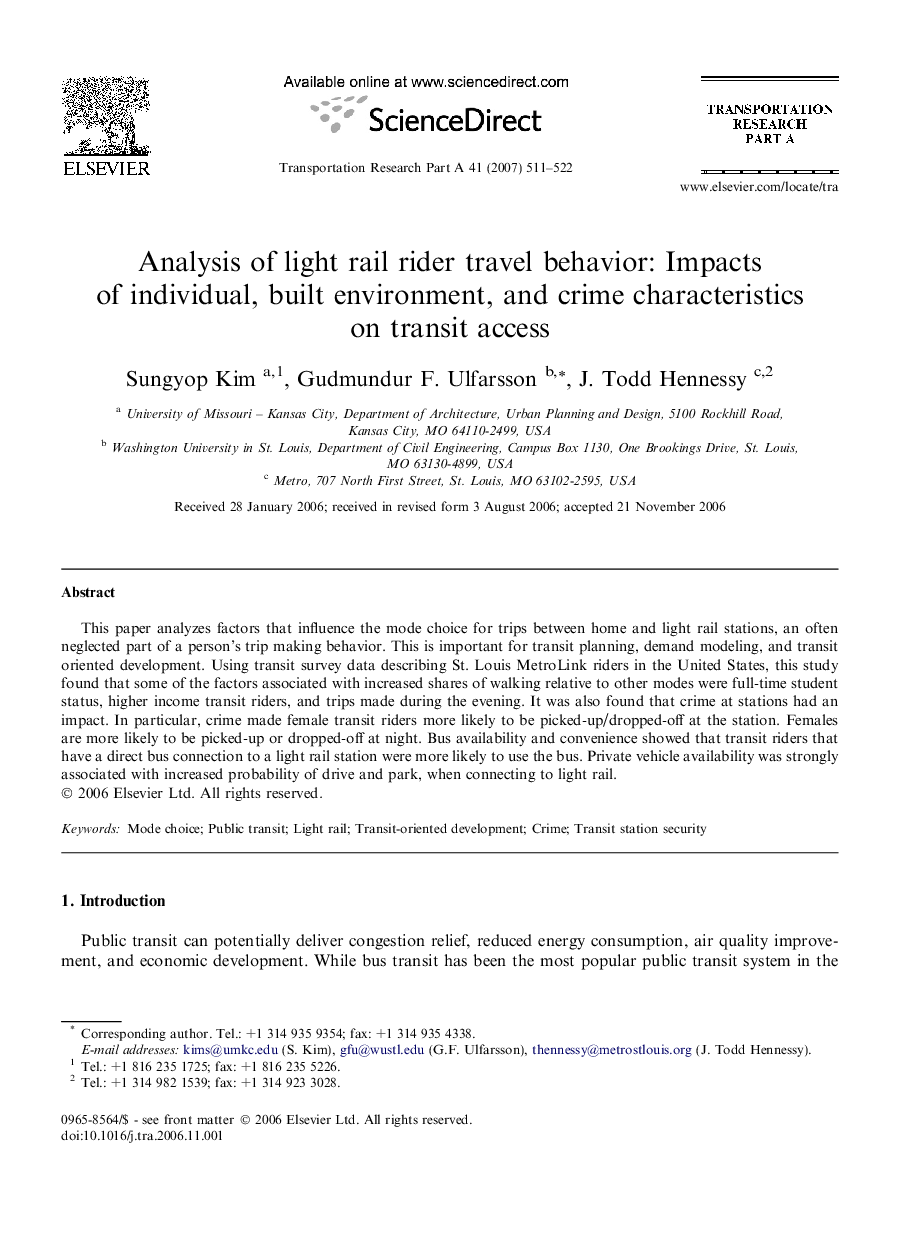| Article ID | Journal | Published Year | Pages | File Type |
|---|---|---|---|---|
| 312579 | Transportation Research Part A: Policy and Practice | 2007 | 12 Pages |
This paper analyzes factors that influence the mode choice for trips between home and light rail stations, an often neglected part of a person’s trip making behavior. This is important for transit planning, demand modeling, and transit oriented development. Using transit survey data describing St. Louis MetroLink riders in the United States, this study found that some of the factors associated with increased shares of walking relative to other modes were full-time student status, higher income transit riders, and trips made during the evening. It was also found that crime at stations had an impact. In particular, crime made female transit riders more likely to be picked-up/dropped-off at the station. Females are more likely to be picked-up or dropped-off at night. Bus availability and convenience showed that transit riders that have a direct bus connection to a light rail station were more likely to use the bus. Private vehicle availability was strongly associated with increased probability of drive and park, when connecting to light rail.
